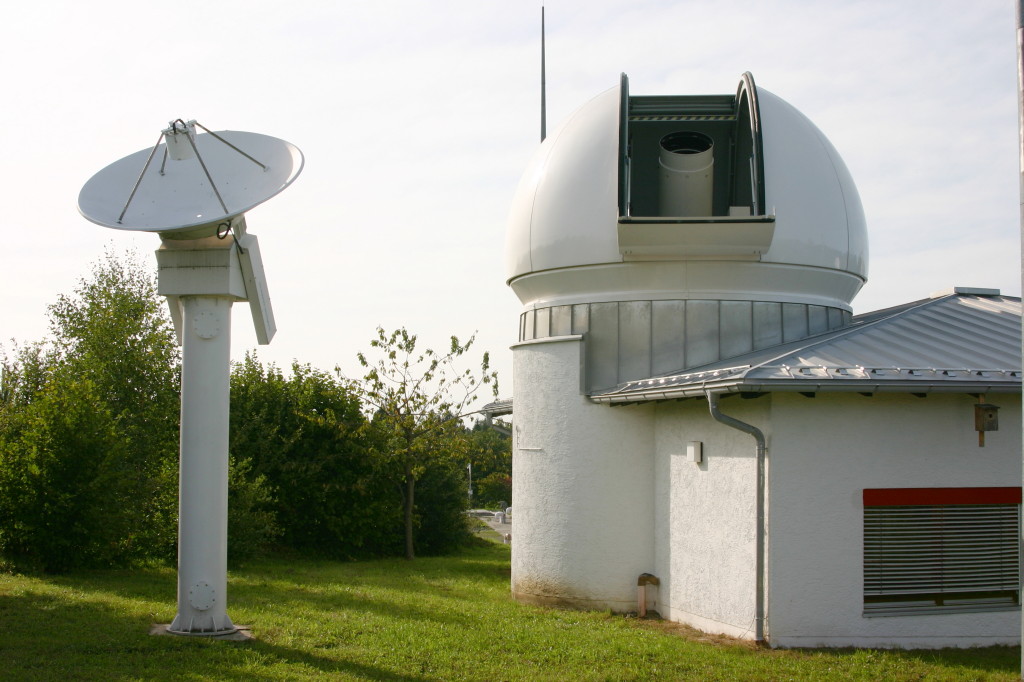|
Arc Measurement
Arc measurement, sometimes called degree measurement (), is the astrogeodetic technique of determining the radius of Earth and, by Circumference#Circle, extension, Earth's circumference, its circumference. More specifically, it seeks to determine the local Earth radius of curvature of the figure of the Earth, by relating the latitude difference (sometimes also the longitude difference) and the geographic distance (arc length) Surveying, surveyed between two locations on Earth's surface. The most common variant involves only astronomical latitudes and the meridian arc length and is called ''meridian arc measurement''; other variants may involve only astronomical longitude (''parallel of latitude, parallel arc measurement'') or both geographic coordinates (''oblique arc measurement''). Arc measurement campaigns in Europe were the precursors to the International Association of Geodesy (IAG). Nowadays, the method is replaced by worldwide geodetic networks and by satellite geodesy. His ... [...More Info...] [...Related Items...] OR: [Wikipedia] [Google] [Baidu] |
Parallel Of Latitude
A circle of latitude or line of latitude on Earth is an abstract east–west small circle connecting all locations around Earth (ignoring elevation) at a given latitude coordinate line. Circles of latitude are often called parallels because they are parallel to each other; that is, planes that contain any of these circles never intersect each other. A location's position along a circle of latitude is given by its longitude. Circles of latitude are unlike circles of longitude, which are all great circles with the centre of Earth in the middle, as the circles of latitude get smaller as the distance from the Equator increases. Their length can be calculated by a common sine or cosine function. For example, the 60th parallel north or south is half as long as the Equator (disregarding Earth's minor flattening by 0.335%), stemming from \cos(60^) = 0.5. On the Mercator projection or on the Gall-Peters projection, a circle of latitude is perpendicular to all meridians. On the e ... [...More Info...] [...Related Items...] OR: [Wikipedia] [Google] [Baidu] |
Geographic Latitude
In geography, latitude is a geographic coordinate that specifies the north-south position of a point on the surface of the Earth or another celestial body. Latitude is given as an angle that ranges from −90° at the south pole to 90° at the north pole, with 0° at the Equator. Lines of constant latitude, or ''parallels'', run east-west as circles parallel to the equator. Latitude and longitude are used together as a coordinate pair to specify a location on the surface of the Earth. On its own, the term "latitude" normally refers to the ''geodetic latitude'' as defined below. Briefly, the geodetic latitude of a point is the angle formed between the vector perpendicular (or '' normal'') to the ellipsoidal surface from the point, and the plane of the equator. Background Two levels of abstraction are employed in the definitions of latitude and longitude. In the first step the physical surface is modeled by the geoid, a surface which approximates the mean sea level over the oc ... [...More Info...] [...Related Items...] OR: [Wikipedia] [Google] [Baidu] |
Flattening
Flattening is a measure of the compression of a circle or sphere along a diameter to form an ellipse or an ellipsoid of revolution (spheroid) respectively. Other terms used are ellipticity, or oblateness. The usual notation for flattening is f and its definition in terms of the semi-major and semi-minor axes, semi-axes a and b of the resulting ellipse or ellipsoid is : f =\frac . The ''compression factor'' is b/a in each case; for the ellipse, this is also its aspect ratio. Definitions There are three variants: the flattening f, sometimes called the ''first flattening'', as well as two other "flattenings" f' and n, each sometimes called the ''second flattening'', sometimes only given a symbol, or sometimes called the ''second flattening'' and ''third flattening'', respectively. In the following, a is the larger dimension (e.g. semimajor axis), whereas b is the smaller (semiminor axis). All flattenings are zero for a circle (). :: Identities The flattenings can be related t ... [...More Info...] [...Related Items...] OR: [Wikipedia] [Google] [Baidu] |
Snellius' Triangulation
Willebrord Snellius (born Willebrord Snel van Royen) (13 June 158030 October 1626) was a Dutch astronomer and mathematician, commonly known as Snell. His name is usually associated with the law of refraction of light known as Snell's law. The lunar crater Snellius is named after Willebrord Snellius. The Royal Netherlands Navy has named three survey ships after Snellius, including a currently-serving vessel. Biography Willebrord Snellius was born in Leiden, Netherlands. In 1613 he succeeded his father, Rudolph Snel van Royen (1546–1613) as professor of mathematics at the University of Leiden. Surveying In 1615, Snellius, after the work of Eratosthenes in Ptolemaic Egypt in the 3rd century BC, probably was the first to use triangulation to do a large-scale arc measurement for determining the circumference of the earth. He was helped in his measurements by two of his students, the Austrian barons Erasmus and Casparus Sterrenberg. In several cities he also received ... [...More Info...] [...Related Items...] OR: [Wikipedia] [Google] [Baidu] |
Bergen Op Zoom
Bergen op Zoom (; called ''Berrege'' in the Brabantian dialect, local dialect) is a List of cities in the Netherlands by province, city and Municipalities of the Netherlands, municipality in southwestern Netherlands. It is located in the Provinces of the Netherlands, province of North Brabant, at the provincial border with Zeeland. In 2025, the municipality had a population of 70,216. Etymology The city was built on a site where two types of soil meet: sandy soil and marine clay. The sandy soil pushed against the marine clay, accumulating and forming hills over several centuries. People called those hills the ''Brabantse Wal'', literally meaning "ramparts of Brabant". ''Zoom'' refers to the border of these ramparts and ''bergen'' in Dutch means mountains or hills. The name has nothing to do with the little channel, the Zoom, which was later built through Bergen op Zoom. History Bergen op Zoom was granted City rights in the Low Countries, city status probably in 1212. In 128 ... [...More Info...] [...Related Items...] OR: [Wikipedia] [Google] [Baidu] |
Alkmaar
Alkmaar () is a List of cities in the Netherlands by province, city and List of municipalities of the Netherlands, municipality in the Netherlands, located in the Provinces of the Netherlands, province of North Holland. Alkmaar is well known for its traditional cheese market. For tourists, it is a popular cultural destination. The municipality has a population of 111,766 as of 2023. History The earliest mention of the name Alkmaar is in a 10th-century document. As the village grew into a town, it was granted City rights in the Netherlands, city rights in 1254. The oldest part of Alkmaar lies on an ancient sand bank a couple of meters (yards) above the surrounding region; it afforded some protection from inundation during medieval times. Its vicinage consists of some of the Achtermeer, oldest polders in existence. Older spellings include Alckmar. On 24 June 1572, after the Geuzen captured the town, five Franciscans from Alkmaar were taken to Enkhuizen and hanged, becoming the m ... [...More Info...] [...Related Items...] OR: [Wikipedia] [Google] [Baidu] |
Willebrord Snellius
Willebrord Snellius (born Willebrord Snel van Royen) (13 June 158030 October 1626) was a Dutch astronomer and mathematician, commonly known as Snell. His name is usually associated with the law of refraction of light known as Snell's law. The lunar crater Snellius (crater), Snellius is named after Willebrord Snellius. The Royal Netherlands Navy has named three survey ships after Snellius, including a HNLMS Snellius (A802), currently-serving vessel. Biography Willebrord Snellius was born in Leiden, Netherlands. In 1613 he succeeded his father, Rudolph Snellius, Rudolph Snel van Royen (1546–1613) as professor of mathematics at the University of Leiden. Surveying In 1615, Snellius, after the work of Eratosthenes in Ptolemaic Kingdom, Ptolemaic Egypt in the 3rd century BC, probably was the first to use triangulation (surveying), triangulation to do a large-scale arc measurement for determining the Earth radius, circumference of the earth. He was helped in his measureme ... [...More Info...] [...Related Items...] OR: [Wikipedia] [Google] [Baidu] |
Jean Fernel
Jean François Fernel ( Latinized as Ioannes Fernelius; 1497 – 26 April 1558) was a French physician who introduced the term "physiology" to describe the study of the body's function. He was the first person to describe the spinal canal. The lunar crater Fernelius is named after him. Fernel suggested that taste buds are sensitive to fat, an idea which research in the early 21st century proved to be correct. Life He was born in Montdidier and, after receiving his early education at Clermont, he entered the College of Sainte-Barbe, Paris. At first he devoted himself to mathematical and astronomical studies; but from 1534 he gave himself up entirely to medicine, in which he graduated in 1530. His general erudition, and the skill and success with which he sought to revive the study of the old Greek physicians, gained him a reputation, and ultimately the office of physician to the court. Catherine de' Medici, wife of King Henry II of France, sought his advice regarding their ... [...More Info...] [...Related Items...] OR: [Wikipedia] [Google] [Baidu] |
Yi Xing
Yixing (, 683–727) was a Buddhist monk of the Tang dynasty, recognized for his accomplishments as an astronomer, a reformer of the calendar system, a specialist in the ''I Ching, Yijing'' (易經), and a distinguished Buddhist figure with expertise in Chinese Esoteric Buddhism, Esoteric Buddhism.KotykYixing一行 (673/683–727), Brill's Encyclopedia of Buddhism Volume II BRILL 2019 In the realm of secular affairs, Yixing gained prominence for his reforms to the imperial calendar and his construction of a armillary sphere, celestial globe featuring a liquid-driven escapement, the first in a long tradition of Chinese astronomical clockworks. Within Buddhist circles, he is particularly remembered for his contributions to the translation of the ''Vairocanābhisaṃbodhi Sūtra, Mahāvairocana-sūtra'' and for authoring the authoritative commentary on that scripture, the ''Darijing shu'' 大日經疏 (T 1796). Due to his significant activities in both religious and secular spheres ... [...More Info...] [...Related Items...] OR: [Wikipedia] [Google] [Baidu] |
Eratosthenes' Arc Measurement
Eratosthenes of Cyrene (; ; – ) was an Ancient Greek polymath: a mathematician, geographer, poet, astronomer, and music theorist. He was a man of learning, becoming the chief librarian at the Library of Alexandria. His work is comparable to the study of geography, and he introduced some of the terminology, even coining the terms geography and geographer. He is best known for being the first person known to calculate the Earth's circumference, which he did by using the extensive survey results he could access in his role at the Library. His calculation was remarkably accurate (his error margin turned out to be less than 1%). He was the first to calculate Earth's axial tilt, which similarly proved to have remarkable accuracy. He created the first global projection of the world, incorporating parallels and meridians based on the available geographic knowledge of his era. Eratosthenes was the founder of scientific chronology; he used Egyptian and Persian records to estim ... [...More Info...] [...Related Items...] OR: [Wikipedia] [Google] [Baidu] |
Satellite Geodesy
Satellite geodesy is geodesy by means of artificial satellites—the measurement of the form and dimensions of Earth, the location of objects on its surface and the figure of the Earth's gravity field by means of artificial satellite techniques. It belongs to the broader field of space geodesy. Traditional astronomical geodesy is ''not'' commonly considered a part of satellite geodesy, although there is considerable overlap between the techniques. The main goals of satellite geodesy are: # Determination of the figure of the Earth, positioning, and navigation (geometric satellite geodesy) # Determination of geoid, Earth's gravity field and its temporal variations (dynamical satellite geodesy or satellite physical geodesy) # Measurement of geodynamical phenomena, such as crustal dynamics and polar motion Satellite geodetic data and methods can be applied to diverse fields such as navigation, hydrography, oceanography and geophysics. Satellite geodesy relies heavily on orbit ... [...More Info...] [...Related Items...] OR: [Wikipedia] [Google] [Baidu] |





